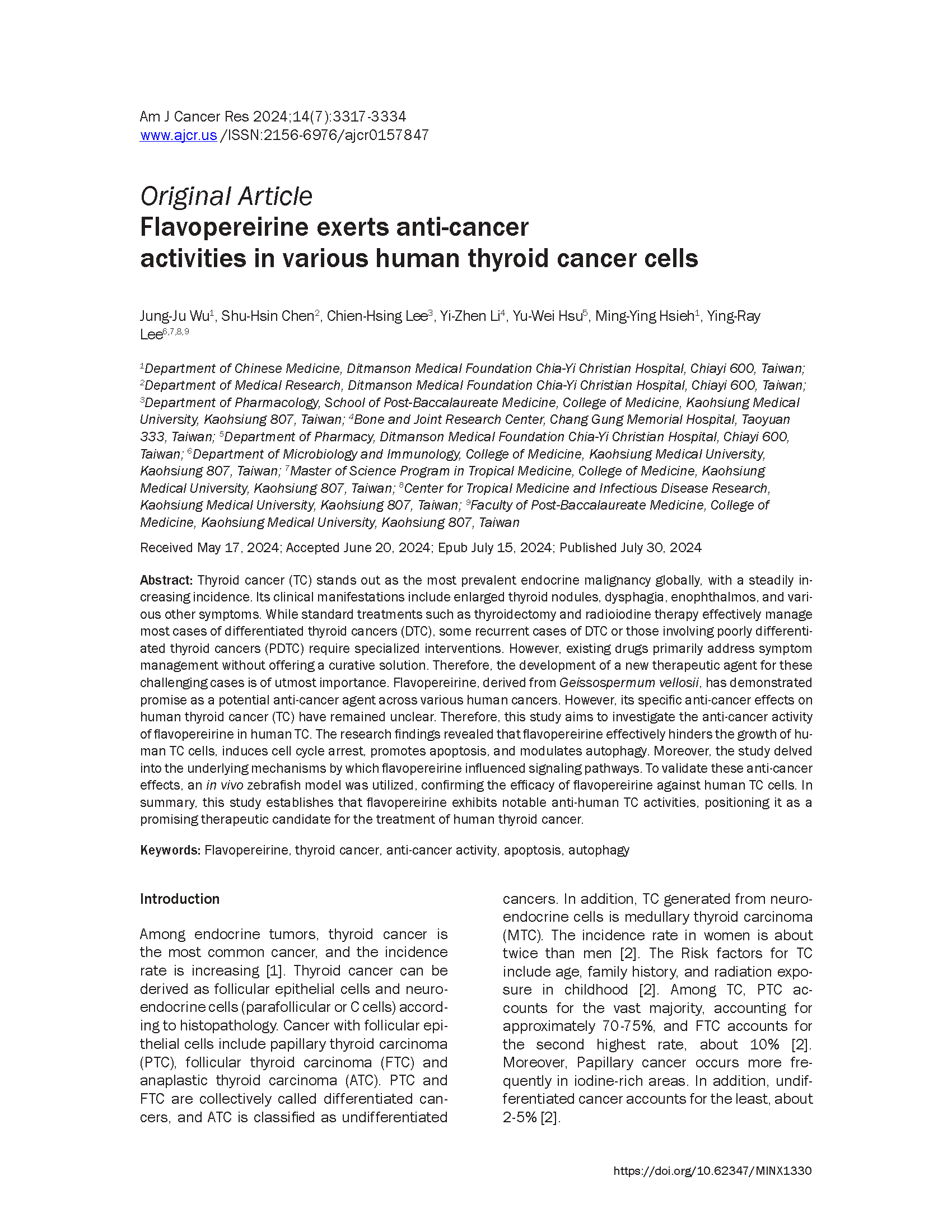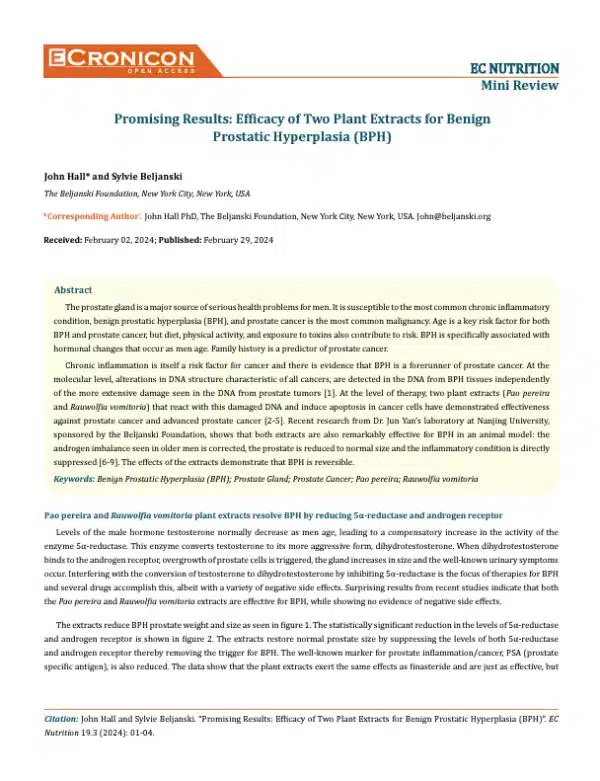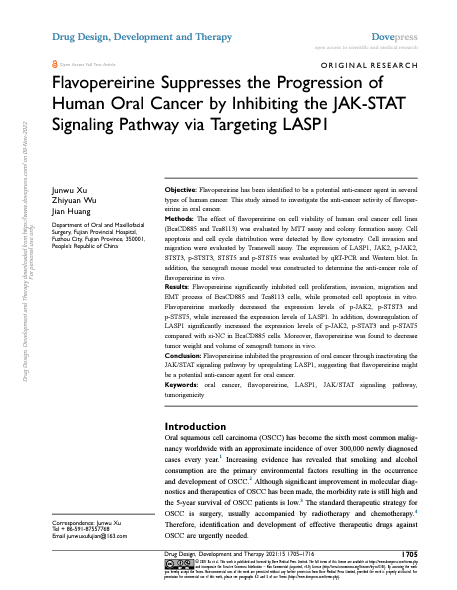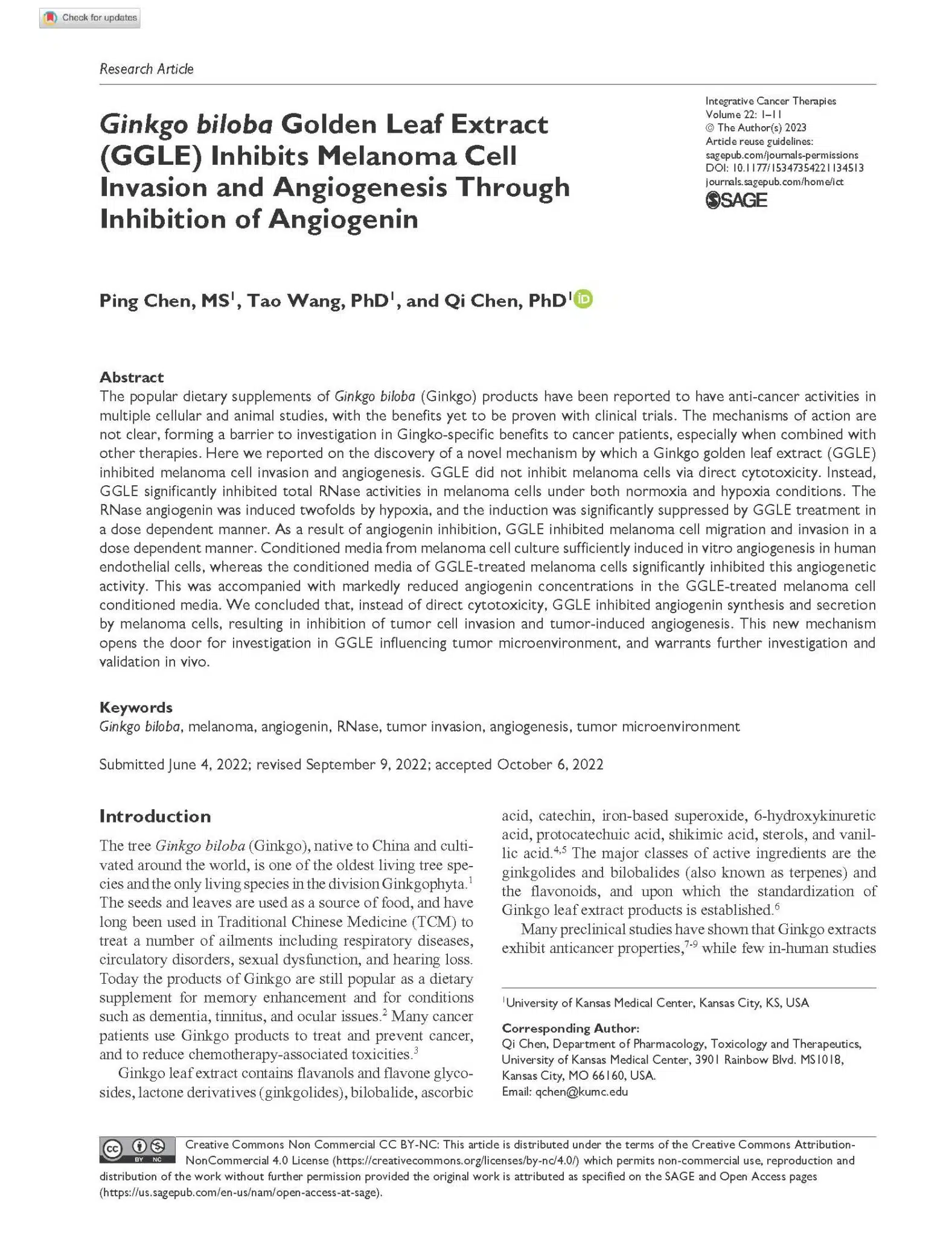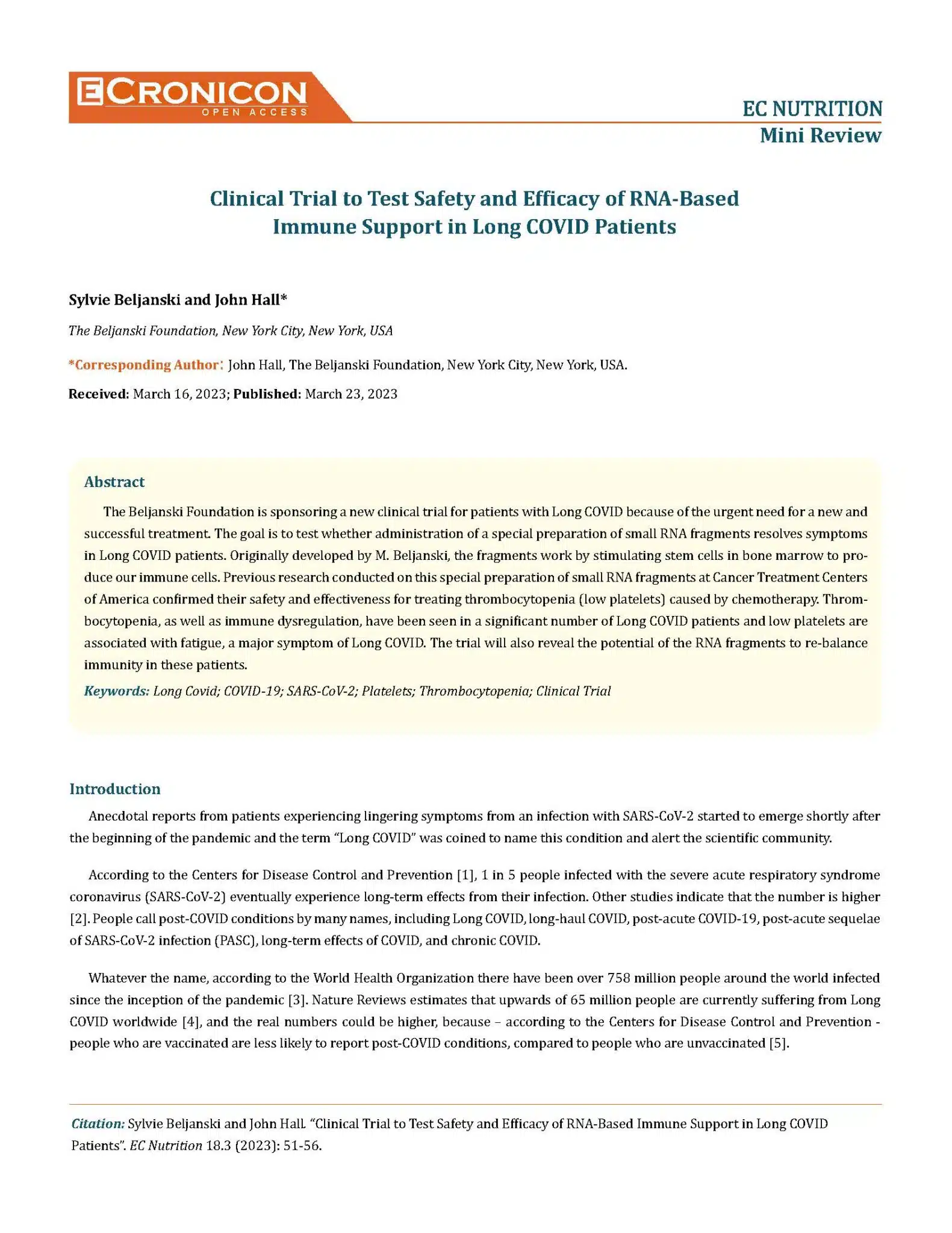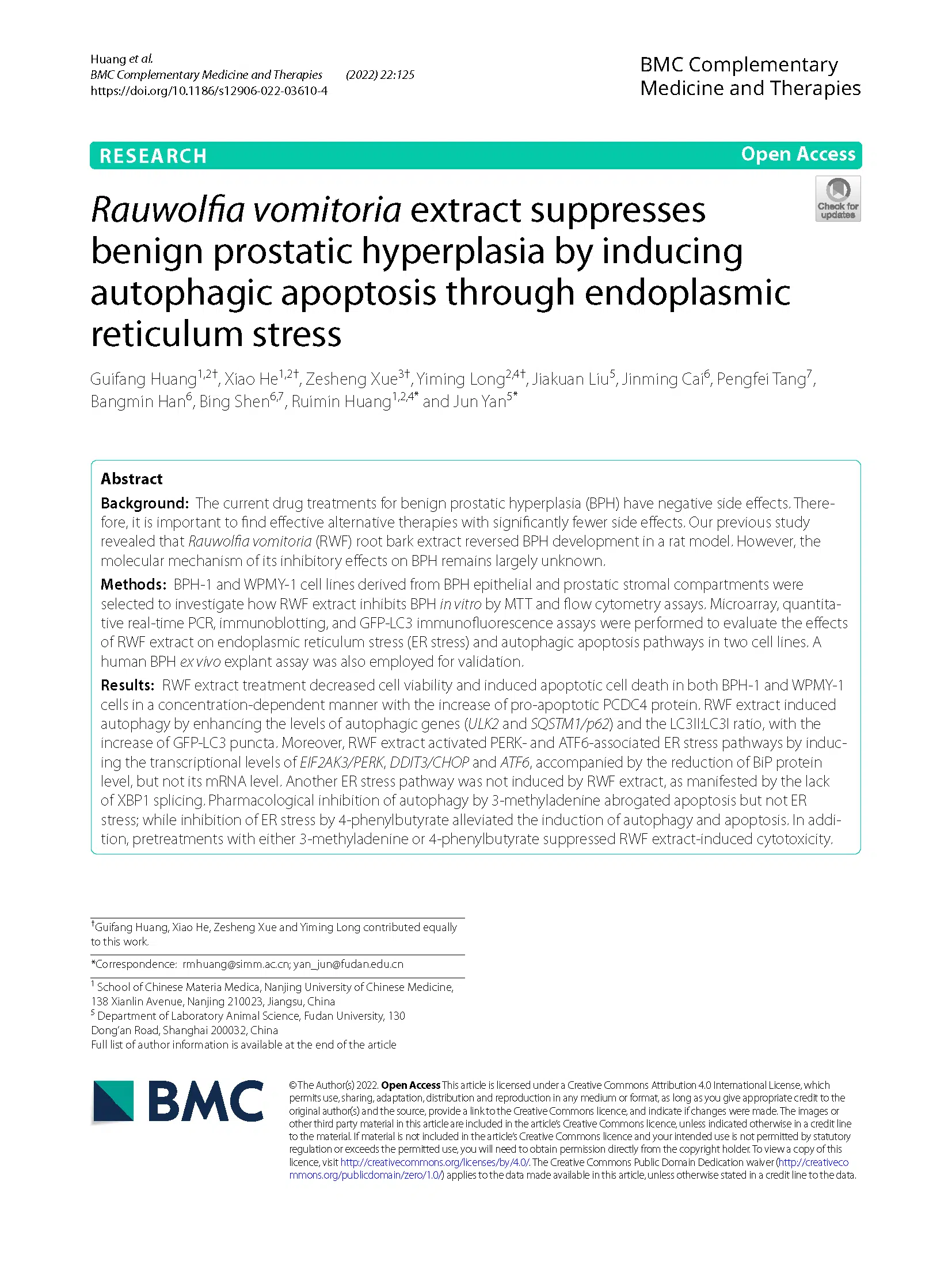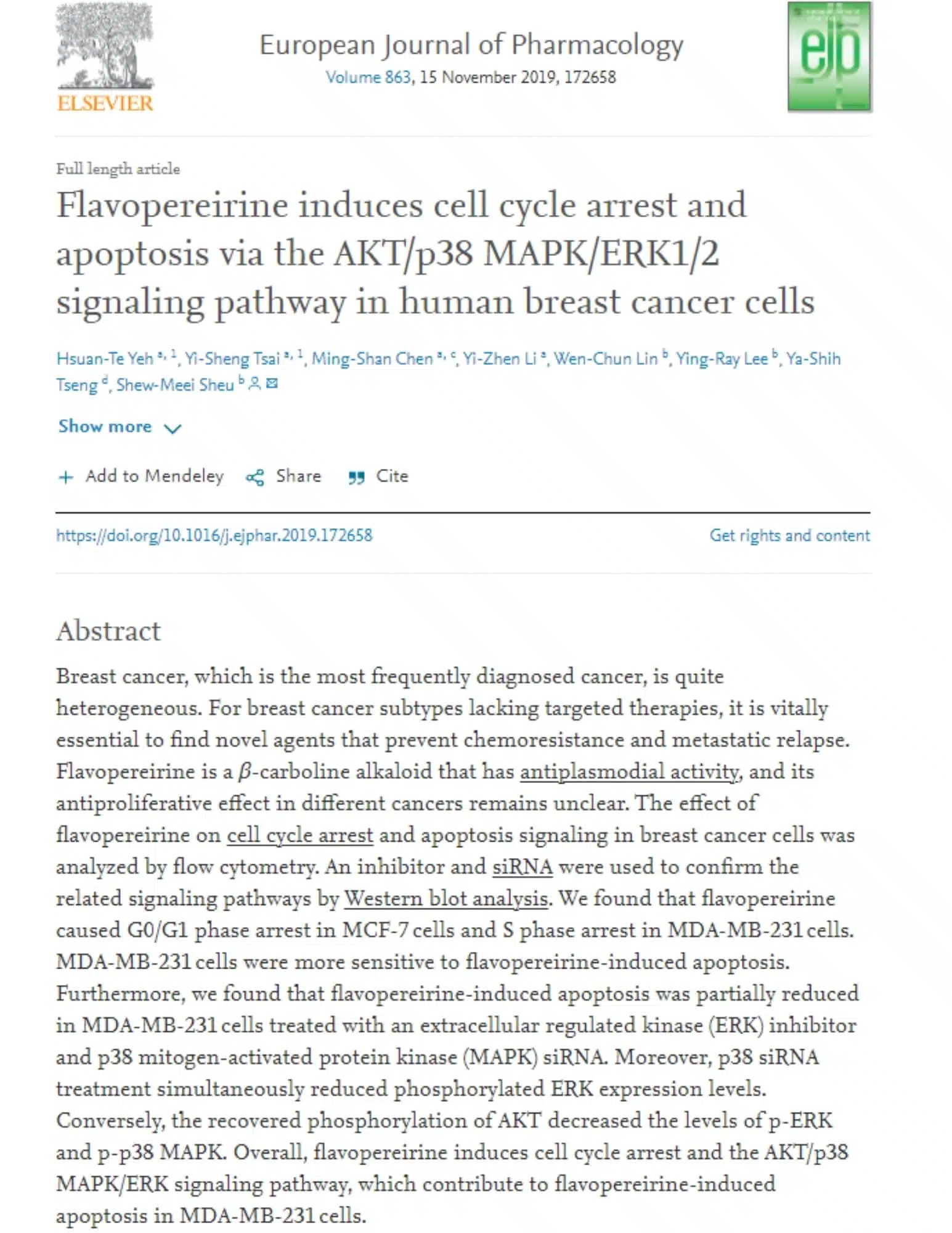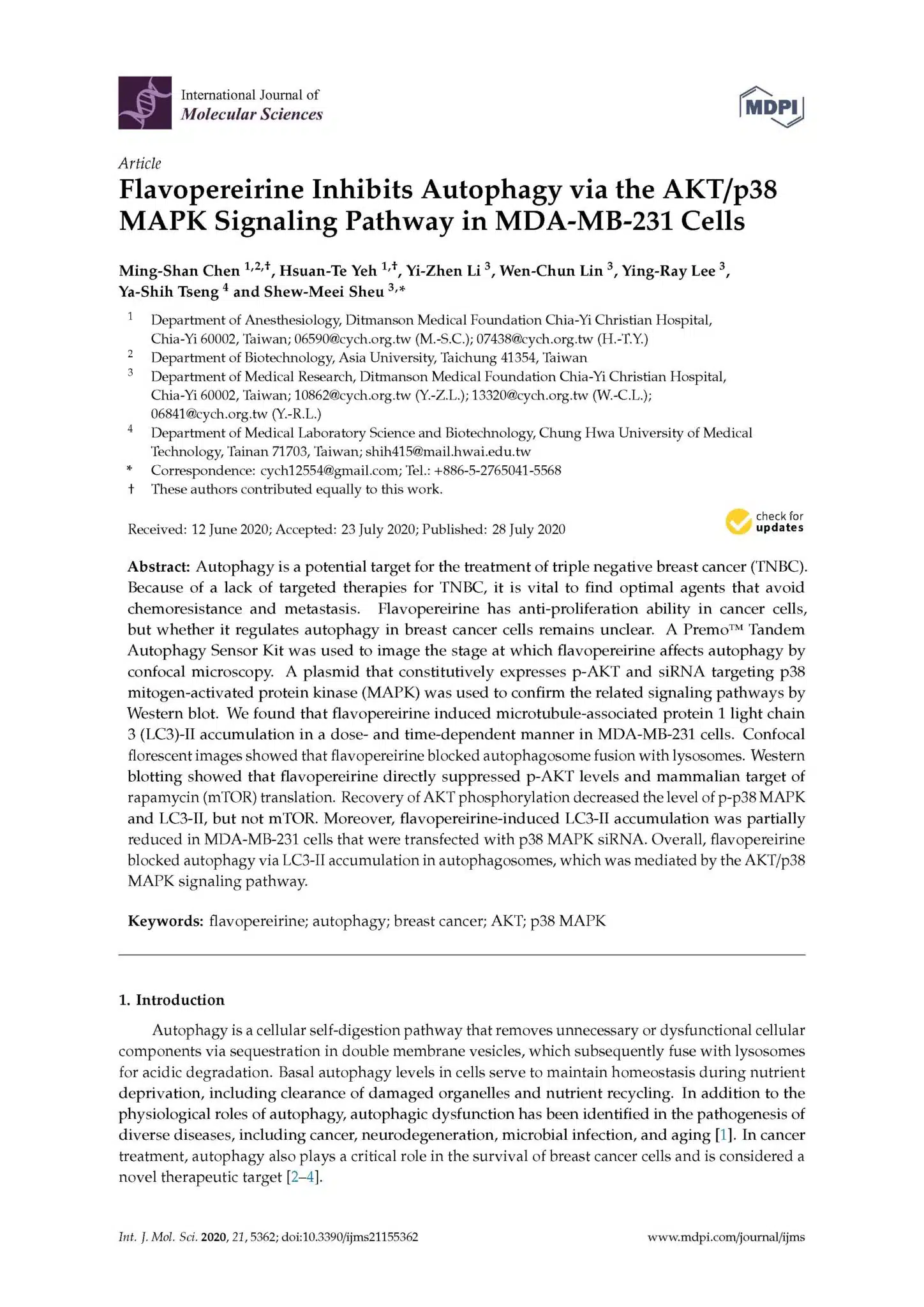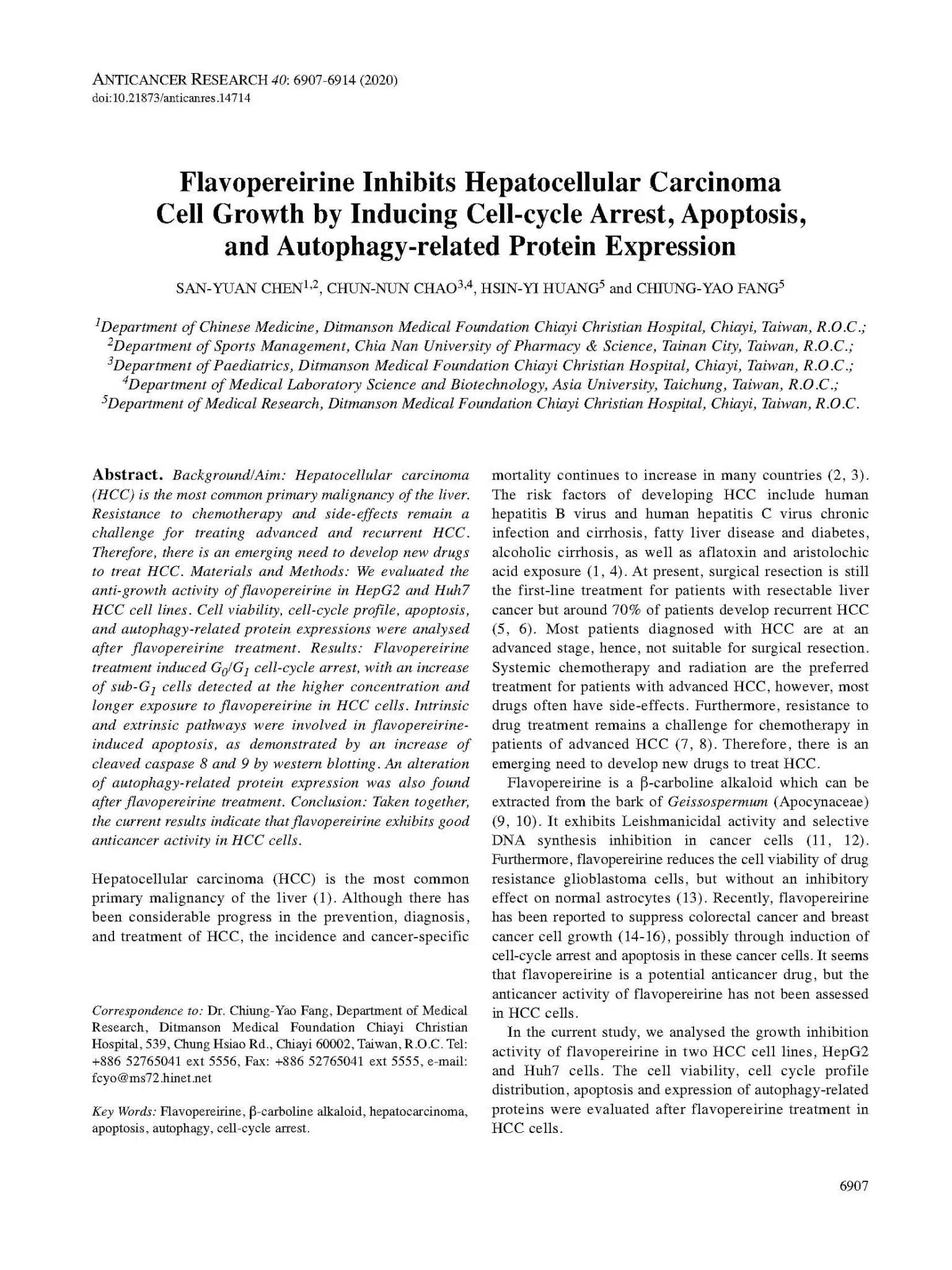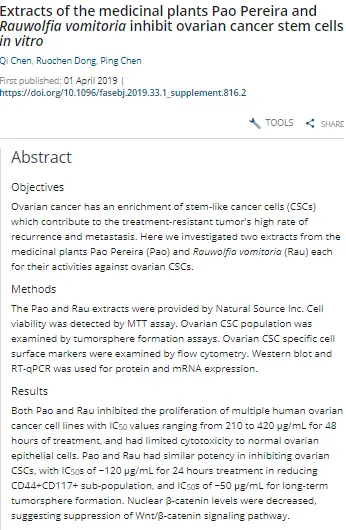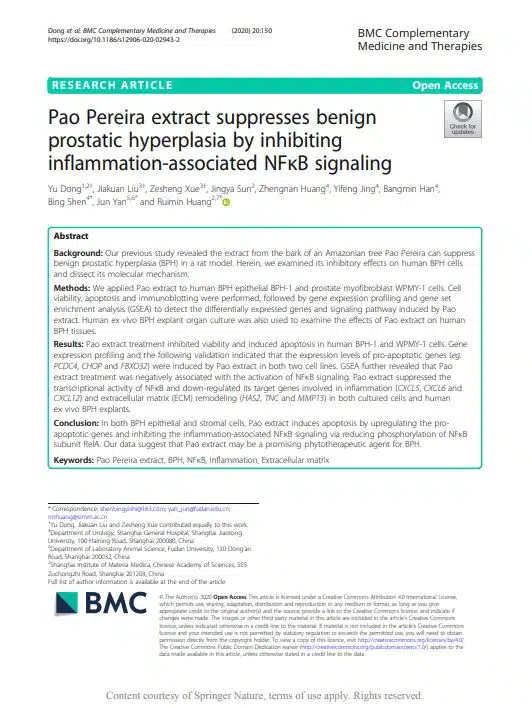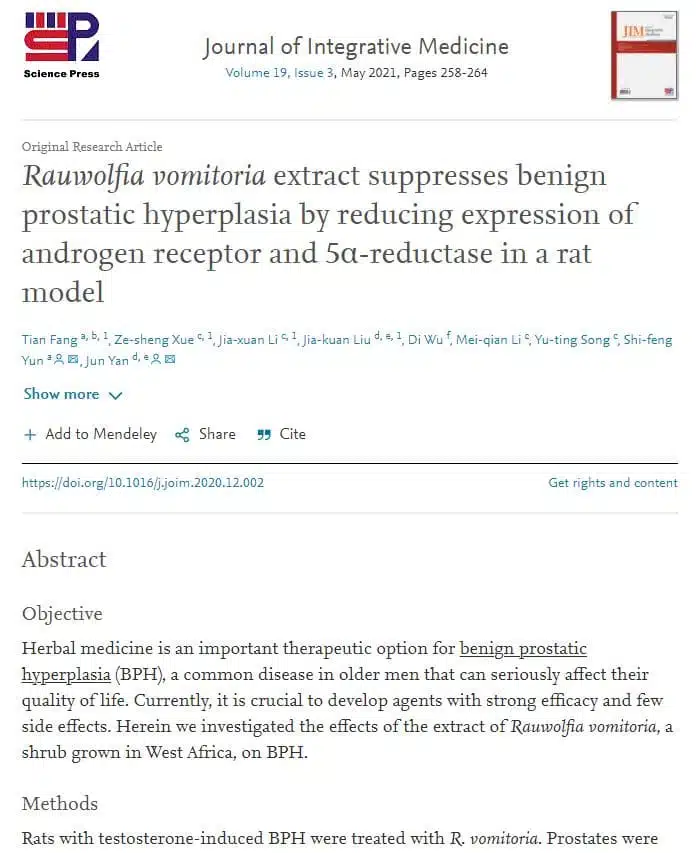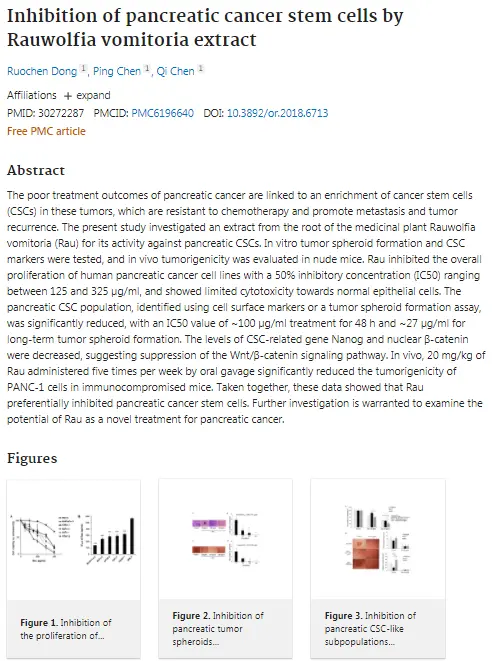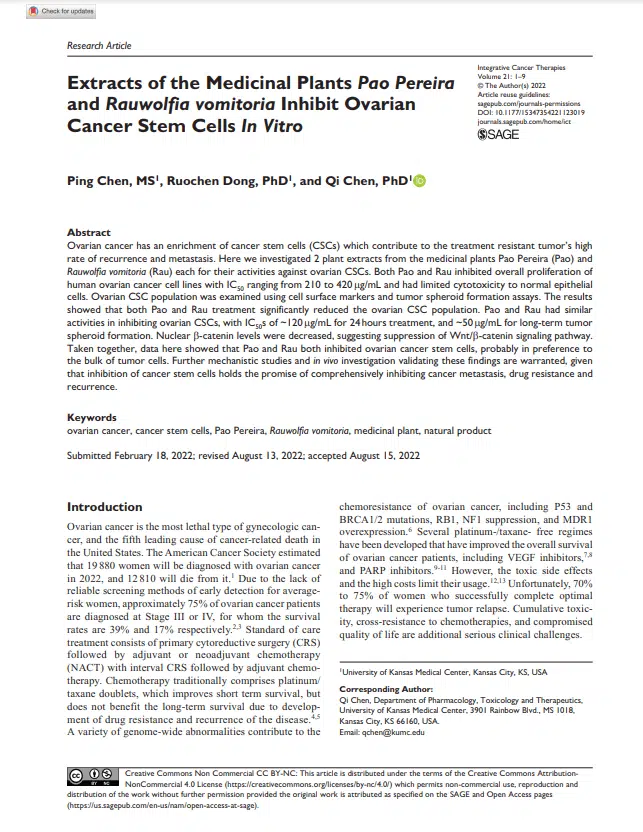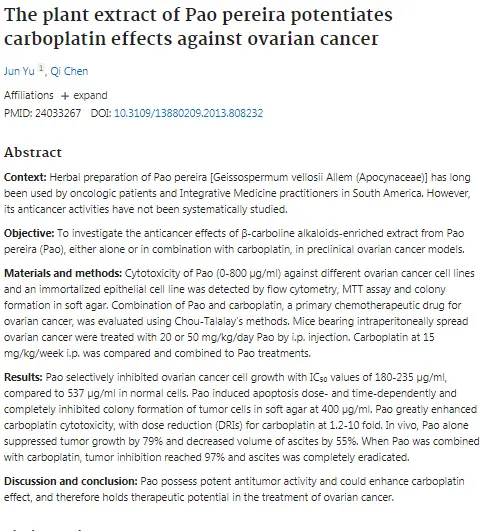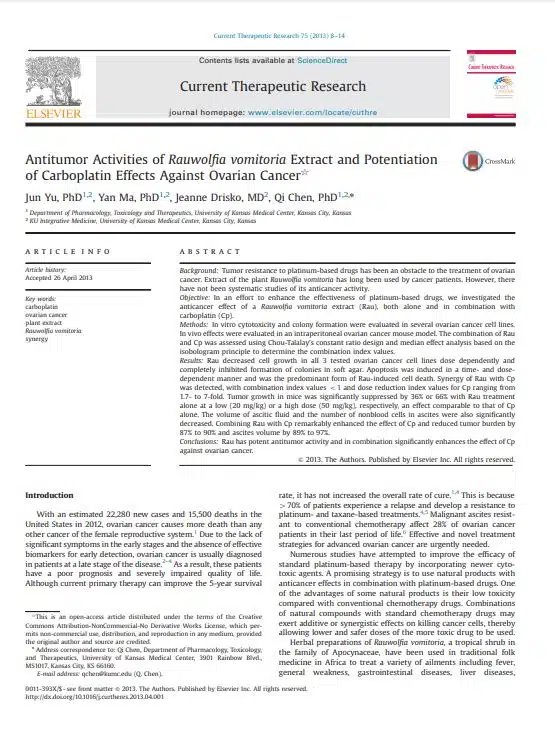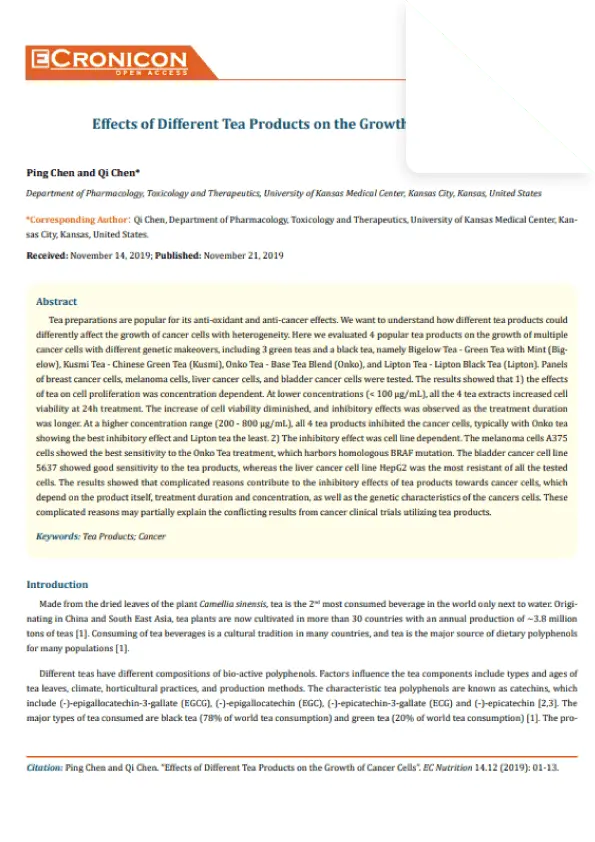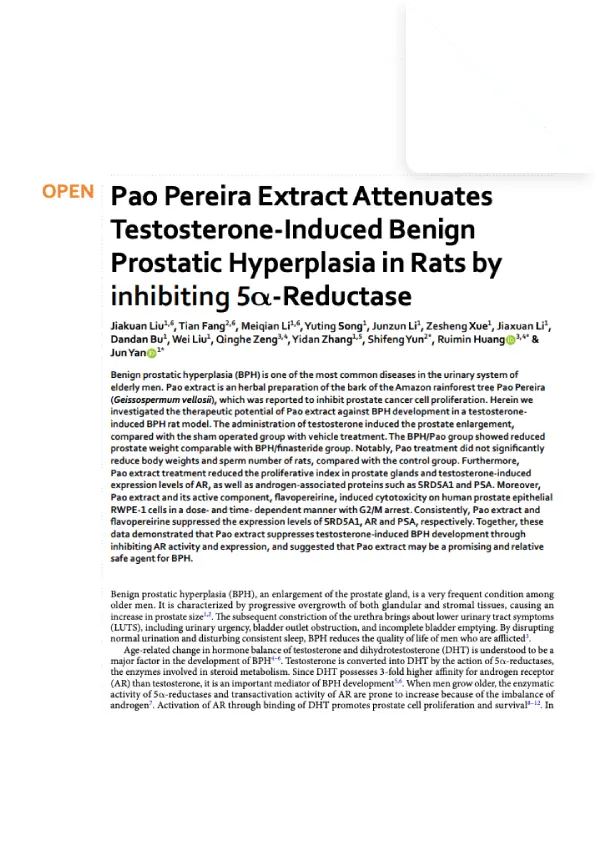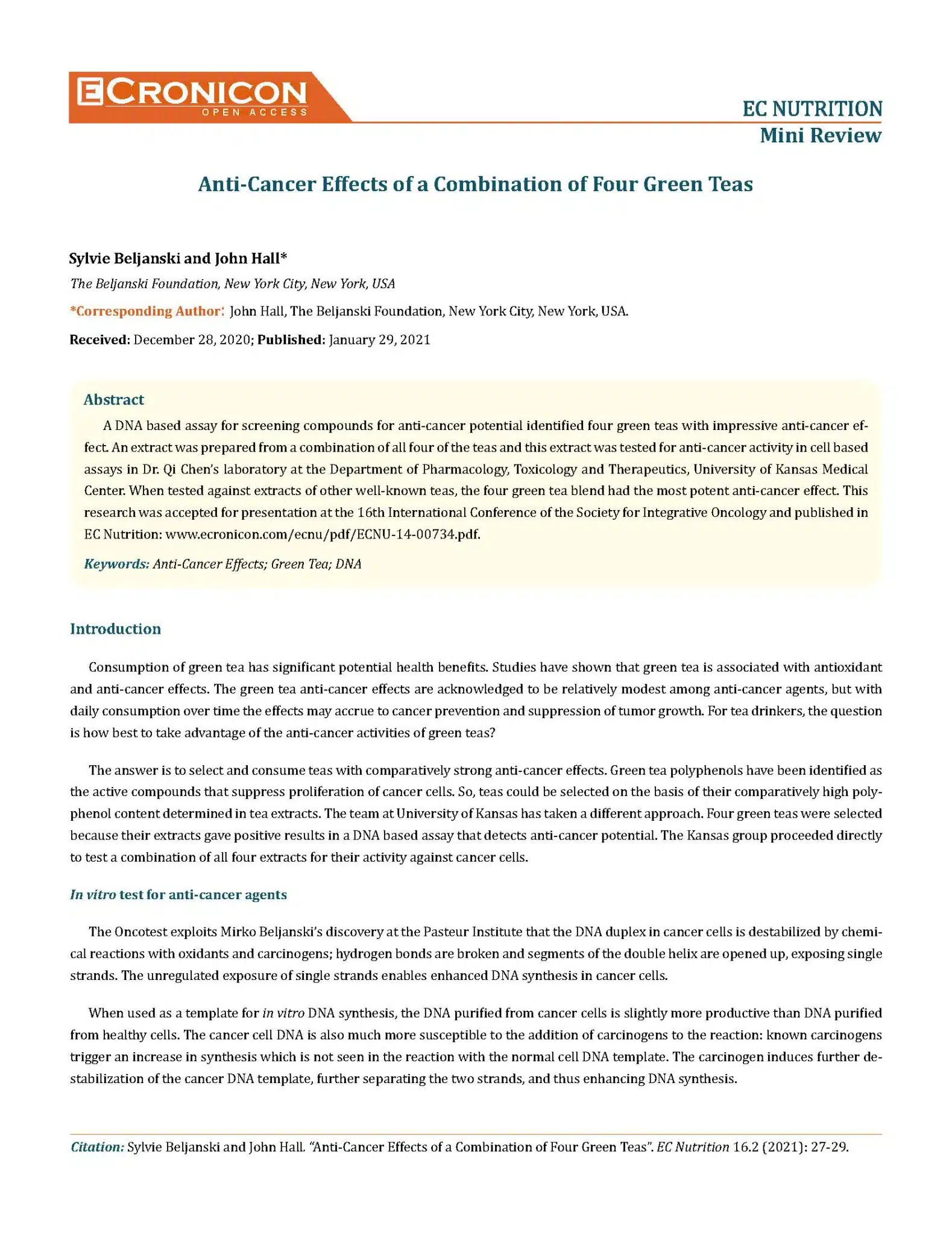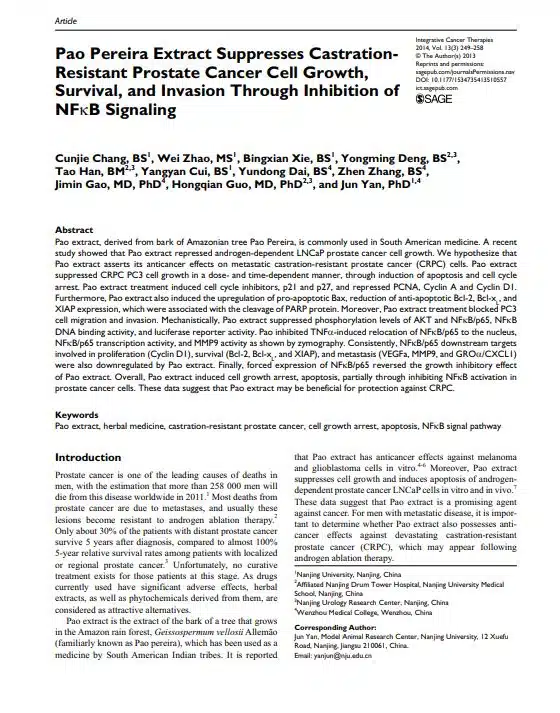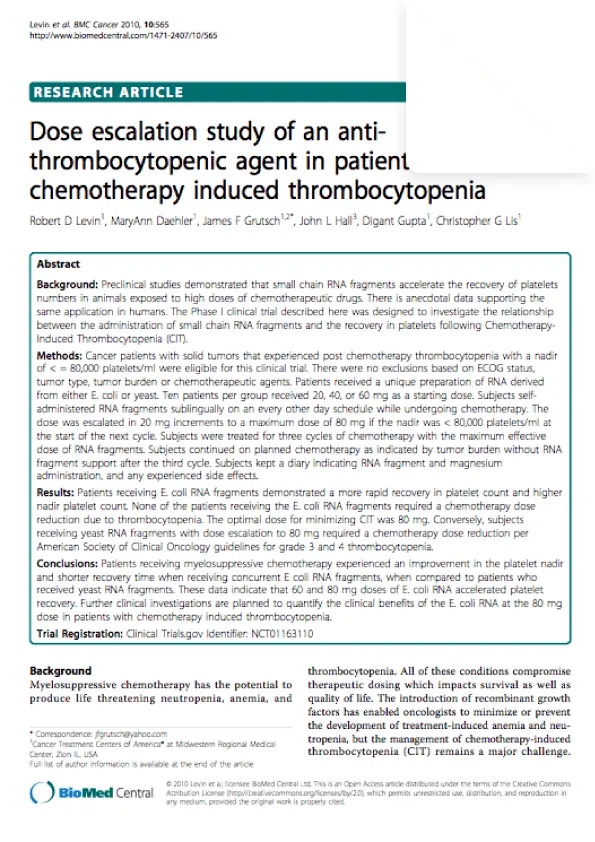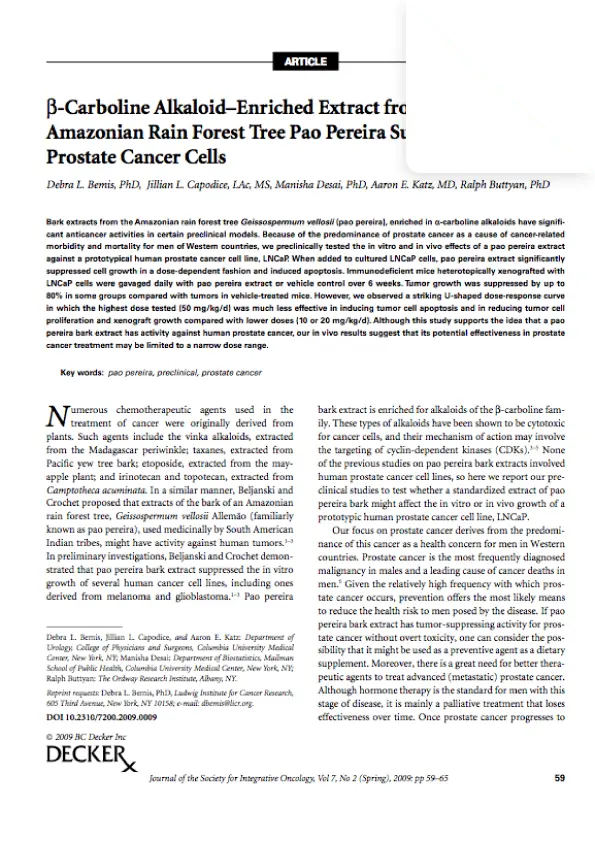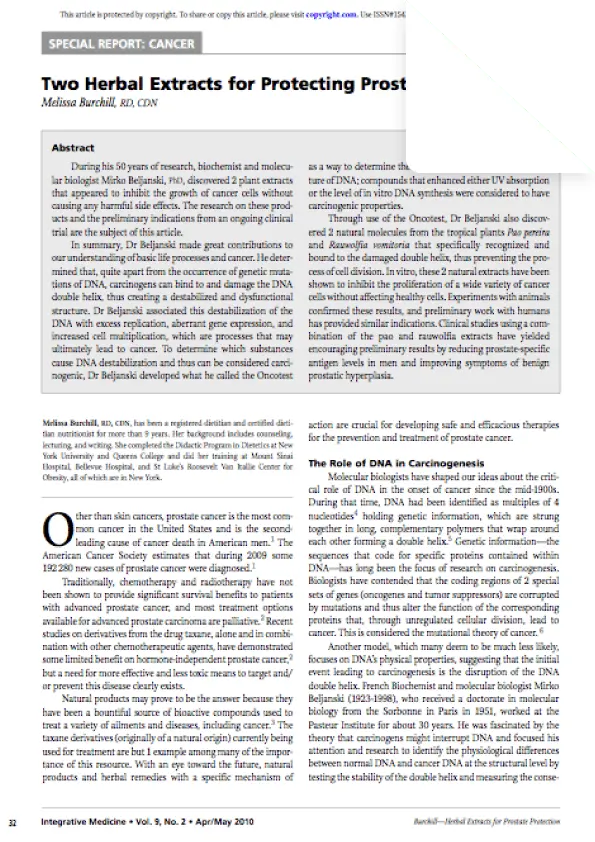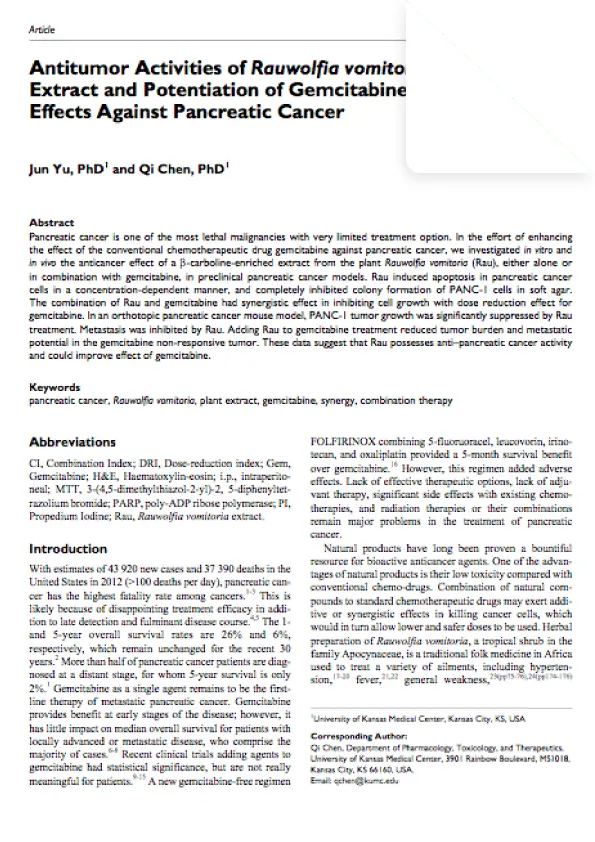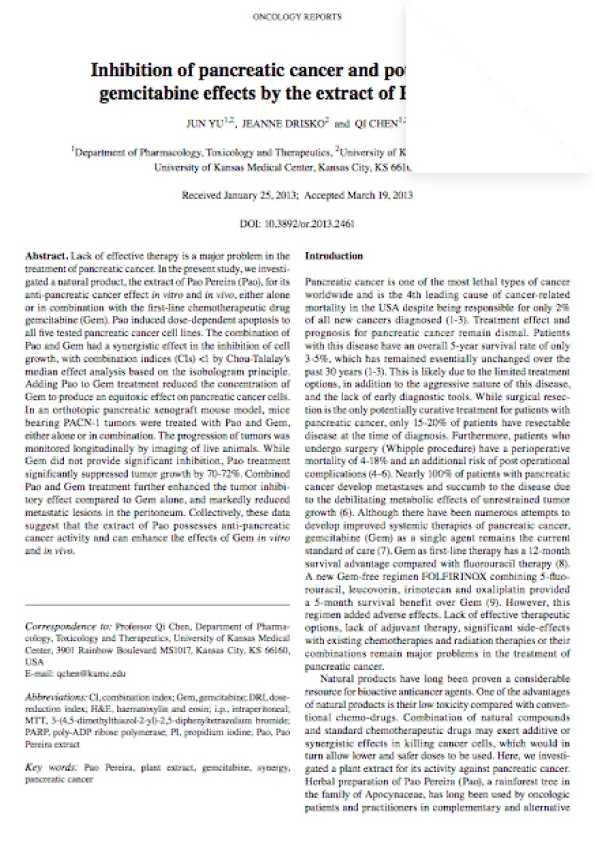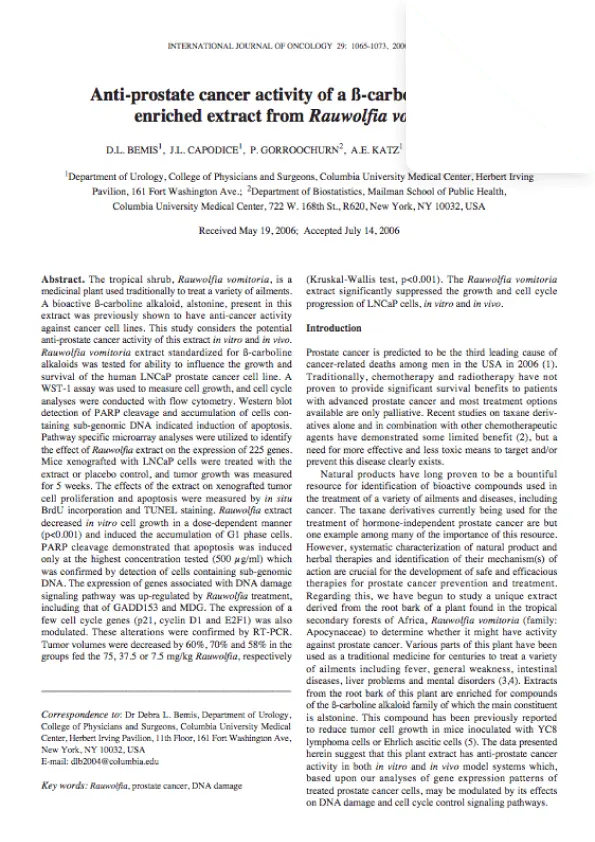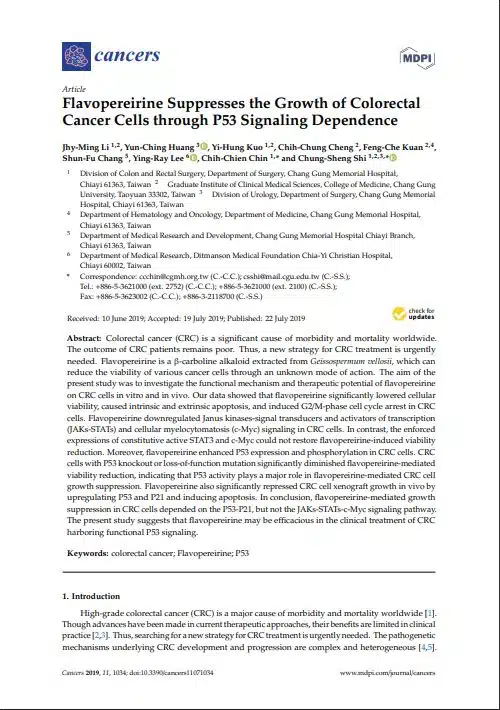All Publications
Research
Since 1999, The Beljanski Foundation has been committed to researching natural solutions for cancer. Please note all publications marked with an * have been funded with the support of The Beljanski Foundation.
The prostate gland is a major source of serious health problems for men. It is susceptible to the most common chronic inflammatory condition, benign prostatic hyperplasia (BPH), and prostate cancer is the most common malignancy. Age is a key risk factor for both BPH and prostate cancer, but diet, physical activity, and exposure to toxins also contribute to risk. BPH is specifically associated with hormonal changes that occur as men age. Family history is a predictor of prostate cancer.
Chronic inflammation is itself a risk factor for cancer and there is evidence that BPH is a forerunner of prostate cancer. At the molecular level, alterations in DNA structure characteristic of all cancers, are detected in the DNA from BPH tissues independently of the more extensive damage seen in the DNA from prostate tumors [1]. At the level of therapy, two plant extracts (Pao pereira and Rauwolfia vomitoria) that react with this damaged DNA and induce apoptosis in cancer cells have demonstrated effectiveness against prostate cancer and advanced prostate cancer [2-5]. Recent research from Dr. Jun Yan’s laboratory at Nanjing University, sponsored by the Beljanski Foundation, shows that both extracts are also remarkably effective for BPH in an animal model: the androgen imbalance seen in older men is corrected, the prostate is reduced to normal size and the inflammatory condition is directly suppressed [6-9]. The effects of the extracts demonstrate that BPH is reversible.
New Research on Anti-Cancer Effects of Golden Ginkgo Leaf Extract
This publication shows that the Golden Ginkgo Leaf Extract (GGLE) fights cancer progression by inhibiting two major survival strategies of cancer cells: blocking the recruitment of blood vessels that feed tumor growth; and curtailing the invasion of tissues that enables metastasis. This study, focusing on melanoma, was conducted at the University of Kansas Medical Center in Dr. Qi Chen’s laboratory, a longtime collaborator of the Beljanski Foundation.
Cancers use more than one tactic to promote their advance. Not only do they divide rapidly, they send out a signal, called angiogenin, that stimulates new blood supply for tumors and strengthens their capacity to spread by penetrating neighboring tissues. GGLE specifically inhibits the release of this pro-cancer signal, thereby suppressing tumor growth and metastasis.
Combinations of GGLE for its anti-vascular and anti-metastatic activity with the Pao pereira and Rauwolfia vomitoria extracts for direct killing of cancer cells provide a formidable, non-toxic, triple action approach to the fight against cancer.
Read more:
Chen P, Wang T, Chen Q. Ginkgo biloba Golden Leaf Extract (GGLE) Inhibits Melanoma Cell Invasion and Angiogenesis Through Inhibition of Angiogenin. Integrative Cancer Therapies. 2023;22. doi:10.1177/15347354221134513
In Benign Prostatic Hyperplasia, a chronic inflammation that causes prostate enlargement, Rauwolfia vomitoria extract triggers persistent autophagy that leads to death of BPH cells by apoptosis. The result is that BPH cells are removed from the body. Normally, cells maintain homeostasis by recycling their proteins and organelles using a process called autophagy—literally “self-digestion”. Autophagy promotes the survival of cells that contain defective proteins or structures: the recovered components can be reused to make healthy proteins and structures. In BPH, Rauwolfia extract induces an extension of the self-digestion process called autophagic apoptosis, which ends in BPH cell death. For the serious inflammation in Benign Prostatic Hyperplasia, induction of autophagic apoptosis is just what the doctor ordered and Rauwolfia extract does it! Rauwolfia extract is likely to trigger this mechanism in precancerous inflammations in other hormonally regulated tissues such as breast.
Pancreatic cancers are enriched with cancer stem-like cells (CSCs), which are resistant to chemotherapies, and responsible for tumor metastasis and recurrence. We investigated the extract of a medicinal plant Pao pereira for its activity against pancreatic CSCs. Pao inhibited overall proliferation of human pancreatic cancer cell lines and had limited cytotoxicity to normal epithelial cells. In several assays pancreatic CSC population was significantly reduced. In vivo, the Pao extract significantly reduced tumorigenicity of PANC-1 cells. Further investigation is warranted in using Pao as a novel treatment targeting pancreatic CSCs.
Benign prostatic hyperplasia (BPH) is a non-malignant enlargement of the prostate gland, common in older males, that causes urinary and quality of life problems. In a previous study we found that the Pao pereira extract can attenuate BPH development in a rat model by reducing expression of androgen receptor and 5α-reductase. In this study we looked further into the molecular mechanism of Pao pereira’s anti-inflammatory effect in BPH. We found the Pao extract suppressed the growth of two BPH cell lines: BPH-1 and WPMY-1 by inducing apoptosis via inhibition of the NFκB signaling pathway. These findings suggest that Pao Pereira extract may be a very promising therapeutic for BPH.
We investigated Rauwolfia vomitoria extract as a therapeutic option for benign prostatic hyperplasia, a common disease in older men with serious impact on quality of life. The oral administration of the Rauwolfia extract significantly reduced prostate weight in animals with BPH, which is shown by the decreased thickness of the prostate epithelial layer. Similar effects were observed in the BPH animals treated with finasteride. The Rauwolfia extract significantly reduced the level of androgen receptor and 5 alpha reductase as well as testosterone-induced proliferation markers — Proliferating cell nuclear antigen (PCNA) and Cyclin D1. As evidence of its lack of side effects, Rauwolfia did not reduce sperm counts whereas Finasteride did.
The poor treatment outcomes of pancreatic cancer are linked to an enrichment of cancer stem cells (CSCs) in these tumors, which are resistant to chemotherapy and promote metastasis and tumor recurrence. In these experiments, the pancreatic CSC population, identified using cell surface markers or a tumor spheroid formation assay, was significantly reduced by the Rauwolfia vomitoria extract. In vivo the Rauwolfia extract significantly reduced the tumorigenicity of pancreatic cancer cells. Taken together, these data showed that Rauwolfia preferentially inhibited pancreatic cancer stem cells.
Cancer stem cells are a type of stem cell specific to cancer, that is able to reproduce through self-renewal and regeneration into new tumor cells. Cancer stem cells are thought to survive chemotherapy treatments and provide the basis for tumor regrowth. It is critical to find treatments for cancer stem cells to prevent this disease from resurfacing in a person again and again. Research conducted at Kansas University Medical Center concluded that both the Pao pereira (Pau pereira) and Rauwolfia vomitoria extracts inhibited the proliferation of multiple human ovarian cancer cell lines in vitro.
Research conducted at the University of Kansas Medical Center on the effect of the plant extracts on ovarian cancer concludes that “In vivo, Pao pereira (Pau pereira) alone suppressed tumor growth by 79% and decreased volume of ascites by 55%. When Pao pereira (Pau pereira) was combined with carboplatin, tumor inhibition reached 97% and ascites was completely eradicated.” Pao pereira (Pau pereira) possesses potent antitumor activity and works in synergy with chemotherapy.
Research conducted at the University of Kansas Medical Center concluded that Rauwolfia vomitoria was effective against ovarian cancer cells both alone and in combination with carboplatin. The combination decreased tumor size in animal experiments by 87 to 90%. The authors conclude that, “Rauwolfia vomitoria has potent antitumor activity and in combination significantly enhances the effect of carboplatin against ovarian cancer.”
Different tea products could affect the growth of cancer cells. Four popular tea products were evaluated, including 3 green teas and a black tea, namely Bigelow Green Tea with Mint, Kusmi Chinese Green Tea, OnkoTea Green Tea Blend, and Lipton Black Tea. Panels of breast cancer cells, melanoma cells, liver cancer cells, and bladder cancer cells were tested. The results showed that the effects of tea on cell proliferation was concentration dependent. At a higher concentration range, all 4 tea products inhibited the cancer cells, with OnkoTea showing the best inhibitory effect.
Benign prostatic hyperplasia (BPH) is one of the most common forms of chronic inflammation in the urinary system of older men. We investigated the therapeutic potential of Pao Pereira extract against BPH development in a testosterone-induced BPH rat model. The administration of testosterone induced the prostate enlargement and either Pao extract or finasteride was evaluated for potential to resolve the BPH condition. Results showed that prostate weights were dramatically reduced in both the Pao and finasteride groups. Notably, Pao treatment did not significantly reduce sperm numbers which is a well-known side effect of finasteride. Pao extract was found to suppress testosterone-induced BPH development by inhibiting androgen receptor expression and activity and by reducing expression of 5α-reductase and Prostate Specific Antigen (PSA). Pao Pereira extract may be a promising and relatively safe agent for BPH.
A DNA based assay for screening compounds for anti-cancer potential identified four green teas with impressive anti-cancer effect. An extract was prepared from a combination of all four of the teas and this extract was tested for anti-cancer activity in cell based assays in Dr. Qi Chen’s laboratory at the Department of Pharmacology, Toxicology and Therapeutics, University of Kansas Medical Center. When tested against extracts of other well-known teas, the four green tea blend had the most potent anti-cancer effect. This research was accepted for presentation at the 16th International Conference of the Society for Integrative Oncology and published in EC Nutrition.
Low platelet counts, a condition called thrombocytopenia, is a side effect of chemo drugs that damage the bone marrow stem cells that normally produce platelets. This Phase I trial showed that Beljanski’s RNA fragments could prevent thrombocytopenia by inducing the production of new platelets. Patients taking the RNA fragments had their platelet levels return to normal and chemotherapy treatments were completed without dose reductions, platelet transfusions, or suspensions. The RNA fragments protected platelet levels in patients with many different types of cancer who were taking many different anti-cancer drugs. Moreover, patients did not suffer any negative side effects as a result of taking the RNA fragments.
In preclinical pancreatic cancer models, Rauwolfia vomitoria extract induced apoptosis in pancreatic cancer cells in a dose-dependent manner. The combination of Rauwolfia extract and gemcitabine had a synergistic effect in inhibiting cell growth. Pancreatic tumor growth was significantly suppressed by Rauwolfia treatment and metastasis was inhibited as well. Adding Rauwolfia extract to gemcitabine treatment further reduced tumor burden and metastatic potential in the gemcitabine resistant tumors. These data suggest that Rau possesses anti–pancreatic cancer activity and could improve the effect of gemcitabine.
Pao pereira extract induced dose-dependent apoptosis in all tested pancreatic cancer cell lines. The combination of Pao extract and Gemcitabine had a synergistic effect in the inhibition of cancer cell growth. Mice with pancreatic tumors were treated with Pao extract and Gemcitabine, either alone or in combination. While Gemcitabine did not provide significant inhibition, Pao treatment significantly suppressed tumor growth by 70-72%, and by 78% when combined with Gemcitabine.
The tropical shrub, Rauwolfia vomitoria, is a medicinal plant used traditionally to treat a variety of ailments. A bioactive ß-carboline alkaloid, alstonine, present in this extract was previously shown to have anti-cancer activity against cancer cell lines. This study considers the potential anti-prostate cancer activity of this extract in vitro and in vivo. Rauwolfia vomitoria extract standardized for ß-carboline alkaloids was tested for ability to influence the growth and survival of the human LNCaP prostate cancer cell line. A WST-1 assay was used to measure cell growth, and cell cycle analyses were conducted with flow cytometry. Western blot detection of PARP cleavage and accumulation of cells containing subgenomic DNA indicated induction of apoptosis. Pathway specific microarray analyses were utilized to identify the effect of Rauwolfia extract on the expression of 225 genes. Mice xenografted with LNCaP cells were treated with the extract or placebo control, and tumor growth was measured for 5 weeks.
Share


